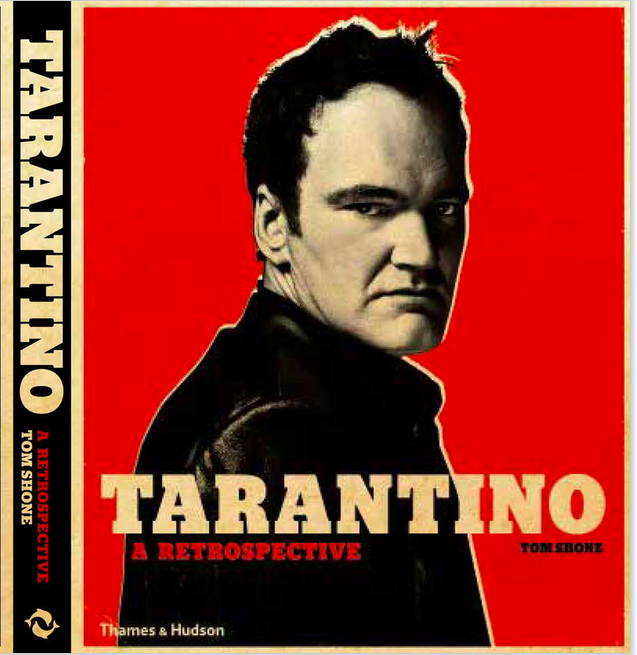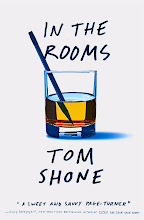 From The Guardian, my column about Magic Mike. Here is how the conversation has gone in my house for the last few weeks.
From The Guardian, my column about Magic Mike. Here is how the conversation has gone in my house for the last few weeks.
ME
“Look at this honey: Magic Mike is getting great reviews.”
MY WIFE
“I’m not going to see that.”
ME
“Why not?”
MY WIFE
“Okay. One, waxed chests. Two, the state of Florida. Three, Channing Tatum. And four: it’s about male stripping.”
ME
[a little startled by her precision]
“I think that’s a great idea for a movie. Have you ever seen a film about male strippers before?”
MY WIFE
“The Full Monty. That I liked. That was a comedy.”
ME
[picking up the newspaper]
“Don’t you think it should be taken seriously? Soderbergh’s film is all about ‘deferred dreams’… ‘the hawkers and hustlers on capitalism’s lowest rung’… ‘The pathos behind the glitter and thongs’.”
Pause.
MY WIFE
“Not my thing.”
ME
[grumpily]
“Okay, okay. I’ll find a friend to go with. Maybe Ian would like it.”
I say this only because the reviews have been almost universal in the gender-coding of their recommendations. “Ladies are gonna love Magic Mike,” enthused Variety's Peter Debruge. “Should rake in girl and gay dollars on the strength of its ample man candy alone,” said David Rooney of The Hollywood Reporter. Sure enough, The New York Times reported that the film has been playing at Clearview Chelsea cinemas to crowds of shirtless gay men showing off their chiseled torsos while patrons shoved dollar bills down their pants. They found one straight man in the audience who had heard it was “a critique of capitalism,” he said. “That caught me more. I’m interested in ladies, not men.”
So how come I was so gaga to see the damn thing? I should explain that I am an Englishman in New York which means that by most of the standards of American masculinity — sports-talk, locker room badinage, high fives, backslaps, ability to gut a fish and navigate by starlight — I do not measure up. On the macho-meter I register just a notch above Carson Cressley. My wife, on the other hand, is from Ohio, famous for the inventive things they do with fabricated steel in their spare time and their unique method of coal mining which involves digging until the tunnel collapses, on purpose. So her testosterone levels are, in all probability, just a notch above mine. A few years back, for instance, we found ourselves engaged in a fierce fight for the remote: I wanted to rewatch Titanic while she wanted to watch the Superbowl.
Nor is the sight of Leonardo di Caprio in a tux the only thing that floats my boat. For as long as I can remember, I’ve been pretty much bisexual at the movies. I swing both ways. I drink from both taps. I hit for both teams. Last year, I was like everyone else gaga for Gosling, after that elevator kiss with Carey Mulligan in Drive. The year before that, The Kids Are Alright brought my ten-year-old Mark Ruffalo crush out of hibernation. A year previous it was James Franco, the generous Adonis of Milk, tenderly smooching with Sean Penn in long-shot from an first-story window. Bliss.
I know what you’re thinking. You’re thinking: Dude is just gay. C’mon out of the closet, Tom! The truth is I first started crushing on men because I was trying to figure out how to get girls — my sisters’ friends, to be precise, all queued up at the local movie theatre to take in the breathtakingly beautiful sight of a young Richard Gere in Yanks. I was eleven-years old: an overpowering sight for an eleven-year-old of any gender. They sat there, mute with longing; I sat sandwiched in the middle, stealing glances to either side, fascinated by his effect on them. The next Richard Gere move that came along — American Gigolo — I trotted along to the cinema to take notes as Gere did a series of abdominal crunches while hung upside down from his bedroom doorway learning Swedish from a tape. Paydirt! — I thought to myself — this is what is necessary to capture the fragile, mysterious hearts of women.
It was detective work, a spying mission behind enemy lines — except somewhere along the line, I forgot my original mission (it turns out there’s more to women than abdominal crunches and Swedish pick-up lines) and went native. I became a double agent: I went queer for the movies. “I just went gay all of a sudden!,” as Grant announces in Bringing up Baby. I found a great cover — I became a film critic for a London newspaper — and then proceeded to spend the bulk of my adult life looking at men and women under cover of darkness, feeling the hots for all: Costner in No Way Out (those Navy whites), Daniel Day-Lewis in Last of the Mohicans (the rowing! The waterfall! ), Di Caprio in Titanic (that tux!), Matt Damon in Good Will Hunting (those highlights!).
Nor do I think I am alone in this. The screen is an equal-opportunities seducer — polymorphically perverse. If you are a man (or a woman) and you watch the famous scene in Notorious where Cary Grant nibbles Ingrid Bergman’s ear while she is answering the phone, you don’t feel two different things depending on which half of the screen you look at. I don’t look at Bergman and go “yummy” and then look at Grant and go “shame about him.” Such is the heat of the movie screen that every grain and pixel is suffused with longing. The fact is: I have spent as much time in the dark of the movie theatre, watching men kiss and be kissed, and getting a kick out of it, as I have women.
In 1973, the film theorist Laura Mulvey, in her seminal essay, “Visual Pleasure and Narrative Cinema” for British film theory journal Screen, came up with the notion of “The Male Gaze”, the idea that the prevalence of semi-erotized images of women in Western culture — from adverts to movies to newsreaders — presupposes a male point of view. "In their traditional exhibitionist role women are simultaneously looked at and displayed, with their appearance coded for strong visual and erotic impact so that they can be said to connote to-be-looked-at-ness,” she wrote, thus launching a thousand doctoral theses on the Male Gaze in everything from Alfred Hitchcock’s Psycho to Lynx Deodorant.
There was a paradox at the heart of the theory, however. So prevalent were these images that women, it turned out, had internalized them, which meant the male gaze wasn’t just for men. The famous opening shot of Lost in Translation — Scarlett Johansson’s peach of a bum, in pink knickers, viewed from behind — wasn’t any less an example of the male gaze just because the director, Sofia Coppola, was a woman. Either Coppola had internalized the Male Gaze, Uncle Tom-ishly, or the Male Gaze consisted of a much more rainbow-like spectrum, encompassing many gradations and variations. I also think there is something called The Female Gaze — a way of looking at men on screen that presupposes a female viewer — and that this, too, can be shared by men as well as women. It can be found in the work of directors as various as James Cameron, Steven Soderbergh, Gus Van Sant, Francis Ford Coppola, and Terence Malick, and in films as various as Days of Heaven, The Outsiders, Point Break, Goodwill Hunting, Ocean’s Eleven and — yes — Magic Mike.
I got my wife to see it in the end, after much persuasion. I’ll admit that that most of our fellow theatregoers were women, all having a howling good time by the sound of it, but she came out of it shaking her head.
ME
But you were laughing throughout!
MY WIFE
I was laughing at your reaction.
ME
I think you’re just using me an excuse while secretly liking it!
MY WIFE
If it makes you feel any better.
ME
I know laughter when I hear it. When Matthew McConnaughey did that thing with his hips in front of the mirror you were laughing. Not because I was laughing. But because you found it funny.
MY WIFE
It was pretty funny.
ME
You don’t think it says anything interesting about capitalism?
MY WIFE
A devastating critique.
ME
Are you being serious?
A beat.
MY WIFE
I liked the scene where the kid tried to lap-dance but messed it up. That was a little bit of a turn on.
My head spins around so fast I almost get whiplash.
ME
You found it a turn-on?
MY WIFE
A little.
ME
[speechless]
And thus began another conversation that lasted all the way home.

































